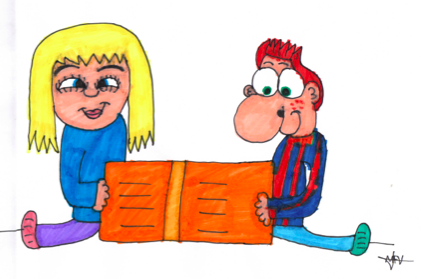
Reciprocal learning: a guided practice to improve reading comprehension
Reciprocal learning
Reciprocal learning: a guided practice to improve reading comprehension
Reciprocal learning is characterized by “guided practice in the application of simple and concrete strategies in reading comprehension task” (Soriano, Sánchez, Soriano y Nievas, 2013).
It is well known that nowadays having a good level of reading comprehension is essential as a solid base for the secondary school learning process. That is why the main focus of Primary schools’ learning lies on reading comprehension. Since learning and improving reading comprehension is a primordial fact, investigation has focused on finding different kind of strategies which target is maximizes comprehension in order to apply them as a method to improve that competence.
So far there has been few or none ongoing strategy to improve reading comprehension, rather than merely reading and questions about the text read. The aim of these questions represent a way to assess that the student has understood the text, but is actually not a way to teach strategies to better comprehend the text.
In 2013 the magazine “Anales de la psicología” published an article about the reciprocal learning as a strategy for the reading comprehension (Soriano et al., 2013). On that article, it is reflected the effectiveness of reciprocal learning as an adequate method to perform in our classroom to improve reading comprehension.
Reciprocal teaching is characterized by guided practice in the application of simple and concrete strategies in reading comprehension task. The strategies to be taught could be for example, the followings:
- Predict the text contents.
- Clarify difficulties that the text presents.
- Generate questions about the text.
- Summarize.
Using those strategies you firstly incite students to understand the text per se, and secondly the student has the opportunity to check out what they have understood.
In order to teach those strategies the first step is called modelling. The teacher has to represent a model. That means that he will do what he wants the student to do. As the pupils improve and are ready to go on alone, the teacher slowly disappears. He does not actually disappear at all, but his figure is not as important as at the beginning. It is important to know that it is a slow process. The main point is to try to give responsibility to the pupils as far as they get more confident with the process. To conclude, what we are trying to look for by using reciprocal learning is to promote and incite that pupils to drive their own learning through texts, to get autonomy (Soriano et al., 2013).
References:
Soriano, M., Sánchez, P., Soriano, E. y Nievas, F. (2013). Instrucción en estrategias de comprensión lectora mediante enseñanza recíproca: efecto del agrupamiento de los estudiantes. Anales de psicologia, Vol 29 (nº3) 848-854.

